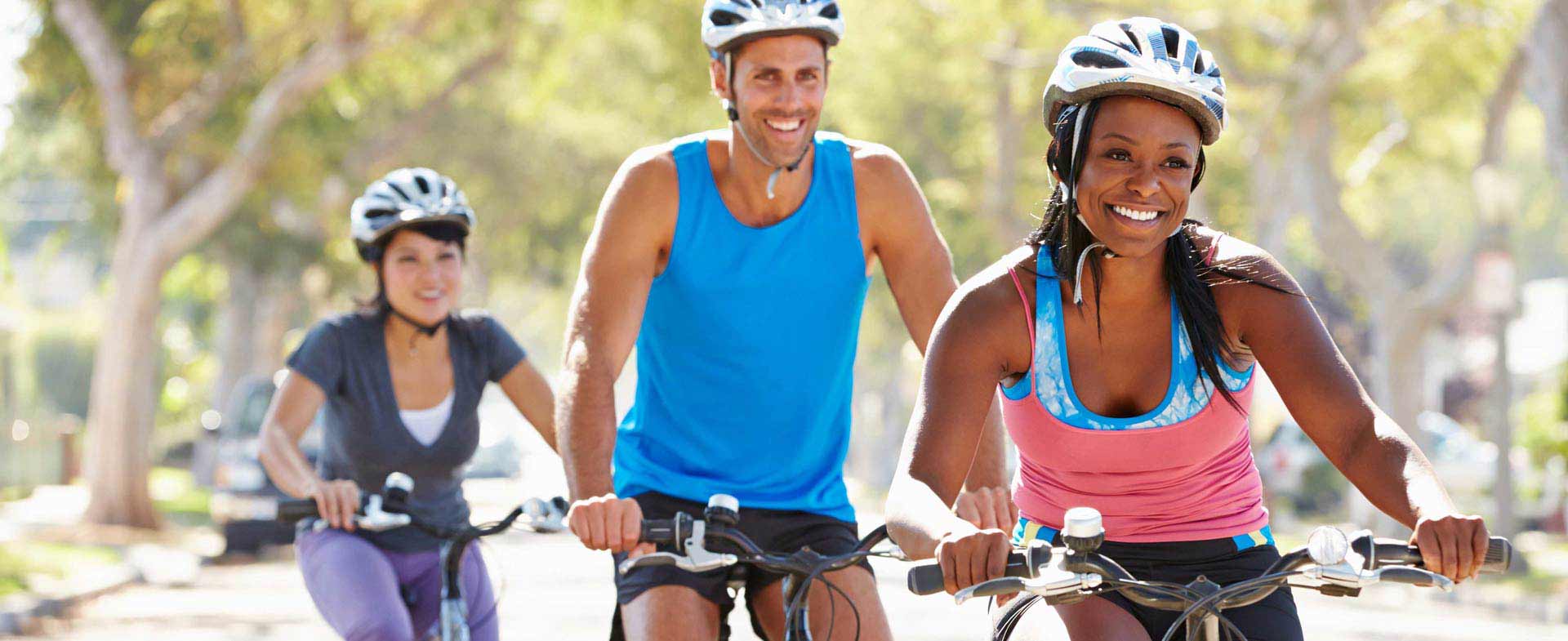Summer is the ideal time to enjoy the fresh air and freedom of a bike ride. It’s also a fantastic way to add some activity to your day, burn some calories and get your heart rate up. But before you head out on your set of two wheels, be aware of the safety tips that can help you prevent injuries.
The latest Michigan State Police data shows there were 1,340 reported bicycle crashes in Michigan in 2022, including 36 deaths. The majority of the crashes occurred in August, and most were not wearing a helmet. And that doesn’t account for the scraped elbows or broken bones that go unreported or show up in ERs and urgent care facilities on a routine basis this time of year.
Following these guidelines will help you have a safe and fun experience:

- Prep your bike. To be sure your bike is ready to ride, inspect it to make sure all parts are secure and working properly. For example, adjust the seat to ensure it fits properly, check the brakes and inflate soft tires. This is especially important if your bike has been in storage.
- Make yourself visible. Wear neon, fluorescent or other bright colors when riding—any time of day or night. “Along with bright colors, wear flashing lights or reflective tape to help drivers notice you,” says Joseph Hoegler, M.D., an orthopaedic surgeon at Henry Ford Health. “Remember, just because you can see a driver doesn’t mean the driver can see you.”
- Follow the rules. Bicycles in the roadway are considered vehicles. You need to follow the rules of the road, including riding in the same direction as other traffic. If riding with kids, use the opportunity to teach them traffic rules and set a good example for them.
- Keep your eyes, ears and mind on the road. That means no texting, listening to music or using anything that distracts you from the road. Watch out for hazards or situations ahead of you that may cause you to fall, like gravel, potholes, sewer grates or train tracks.
- Wear a properly fitted bike helmet every time you ride. Bike helmets reduce the risk of head injury by up to 85%. Find a helmet that is certified by the Consumer Product Safety Commission (CPSC) and specifically tested and designed for cycling. Make sure the straps are comfortably snug (never too loose) and always fastened. A helmet that is too big and slides around on your head or tilts forward and impairs your vision is not going to protect you like a properly fitting one will.
"Insist that anyone riding along with you follows these same precautions. No one plans to have an accident, but you can plan to be safe," says Dr. Hoegler.
Reviewed by Joseph Hoegler, M.D., vice chair of orthopaedic surgery at Henry Ford Health. Dr. Hoegler sees patients at Henry Ford Hospital in Detroit and Henry Ford Medical Center - Royal Oak..



